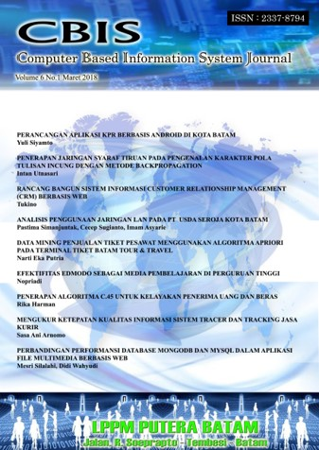IMPLEMENTASI METODE RULE-BASED REASONING PADA EXPERT SYSTEM DALAM MENDETEKSI GANGGUAN PENCERNAAN PADA ANAK
DOI:
https://doi.org/10.33884/cbis.v13i2.10379Keywords:
Pediatric Degestive Disorders, Expert System, Rule-Based Reasoning, Forward Chaining, WebsiteAbstract
Digestive disorders in children are a serios health issue globally, with diarrhea being a leading cause of mortality among toddlers. In Batam City, the hitgh incidence of acute diarrhea and other digestive disorders in children underscores the urgency for better management. Contributing factors include immature immune systems, unhealthy eating patterns, poor sanitation, low parental understanding of Clean and Healthy Living Behavior, and limited access to medical information and facilities. This problem is futher exacerbated by overlapping symptoms of digestive disorders, making early diagnosis difficult. To address these challenges, this research aims to design and build a web-based expert system application capable of detecting digestive disorders in children. The system implements a Rule-Based Reasing method with a Forward Chaining algorithm, which logically matches user-inputted symptoms against rules in tis knowledge base to generate a rapid initial diagnosis. This application focuses on three main indicators of degetive disorders : Diarrhea, Constipation, and GERD, for children aged 5 months to 12 years. Thus, this expert system is expected to be an interactive tool that enhances parental understanding, facititates early diagnosis of digestive disorders in children, and serves ad a reference for healthcare professionals and the development of health information systems.

Downloads
Published
How to Cite
Issue
Section
License
Copyright (c) 2025 Computer Based Information System Journal

This work is licensed under a Creative Commons Attribution-NonCommercial-ShareAlike 4.0 International License.













